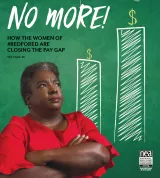Right now, the U.S. is experiencing the highest number of measles cases since the disease was considered eliminated in this country in the year 2000. Measles is extremely contagious. When an infected person coughs or sneezes, the measles virus can remain infectious, in the air, for up to two hours after the infectious person has left the area.
In several states, school nurses have hurried to reach the parents of students at risk of infection and keep all students safe.
But everything that has to do with school nurses and vaccines—from fact-based conversations with parents about the science of immunization to the firsthand monitoring of student populations for diseases—has been made difficult by the underfunding of school nurses.
Across the country, about 25 percent of schools don’t have a nurse, and only about 40 percent have a full-time nurse, according to the National Association of School Nurses (NASN). Nurses commonly travel between three or four schools a day or week, juggling caseloads of 1,500 or more students, trying to distribute medica- tions and treatments on time, attempting to triage the most critical cases, while also keeping on top of a mountain of paperwork.
Most medical professionals believe that parents who don’t want to vaccinate their children need better, fact-based information about vaccines—what they do, and how they do it.
Because school nurses are responsible for tracking students’ vaccines and ensuring compliance with state laws, they often must have these conversations with parents.
How that conversation goes often depends on the strength of the relationship between the nurse and the parent, and the ability to develop that strong relationship often depends on the level of staffing in a school. “You address any myths that you think they may be operating under, you provide them with fact-based, scientific information about immunization,” says NASN President-elect Laurie Combe, a school nurse from Texas with more than 25 years’ experience. But, she adds, “They have to know you. They have to really believe that you have their child’s best interest at heart.”



